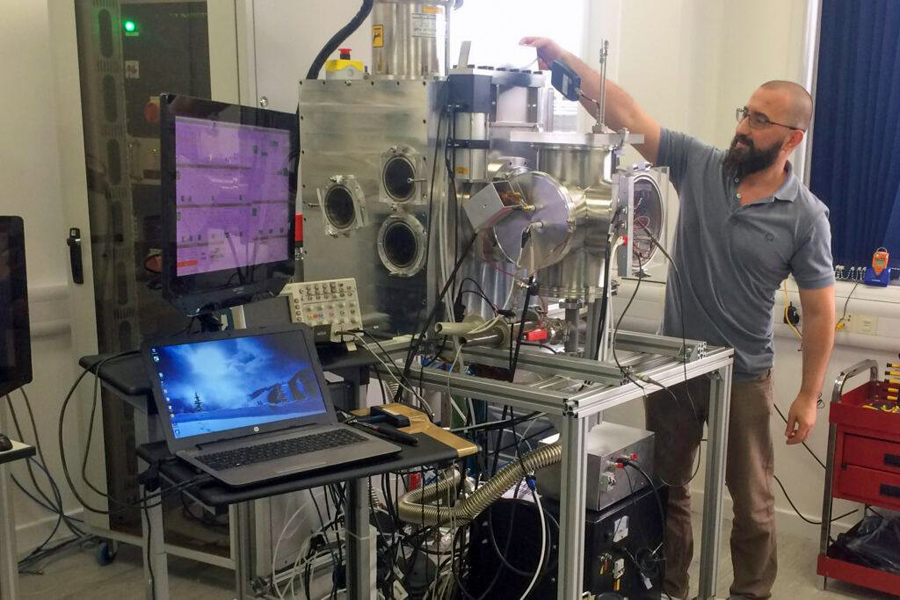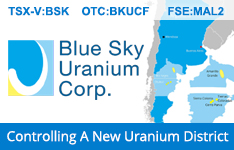Drone company Volatus Aerospace Corp.’s (VOL:TSX; VLTTF:OTCQB) recent acquisition of an Alberta company will allow it to introduce green drone technologies to the oil and gas infrastructure monitoring industry.
Its purchase of Synergy Aviation Ltd. of Edmonton, finalized this month, will put it in a strong position to transition some of the monitoring of 500,000 kilometers of oil and gas pipeline right of way from traditional aviation like helicopters and airplanes to unmanned drones that are greener and safer.
When it comes to long linear inspections of pipelines, transmission lines, corridors, and rights of way, such drone applications are “game-changing,” Michael Cohen, chairman of the Aerial Evolution Association of Canada.
“That technology needs [a] revolution. The regulations need some expansion to support (drones), but once they do, it will literally pull airplanes out of the air and put the drones in their place,” Cohen said. Drones are “far greener with far less costs and far greater safety.”
The global drone market is projected to grow from US$8.15 billion this year to nearly US$50 billion by 2029, a compound annual growth rate of 29%, according to a summary report by Fortune Business Insights.
“The factors such as technological advancements in the industry and increased application areas such as precision agriculture, aerial imaging, cargo management, traffic monitoring, and others trigger the growth of the drone market,” wrote Allied Market Research as part of a report on the industry. “Although the market is currently in the growing stage, it is expected to generate high demand in the next few years.”
The Catalyst
In addition to the Synergry purchase, Volatus last week announced a record third-quarter revenue of $CA11.12 million, an increase of 68% over the previous quarter and a 238% increase YOY. Gross profit for the third quarter was CA$3.3 million, an increase of CA$2.6 million YOY, and the company has experienced a gross margin of 30%, an increase of 127 basis points over the second quarter of 2022.
The company serves the commercial and defense markets with integrated drone solutions using a network of more than 1,200 contract pilots across the Americas, providing imaging and security, equipment sales and support, and training.
Cohen said Volatus is “very smart to take this approach” to consolidate the industry.
“Drones are the future,” Volatus Chief Executive Officer Glen Lynch told Streetwise Reports. “It’s a disruptive technology, working its way into every corner of everyday life . . . and Volatus is positioned to shape the future of the drone industry.”
Overall, the company saw a third-quarter loss of more than CA$352,000 due to increased investment in human resources, expansion in the United Kingdom, increased share-based payments, and increased marketing expenses.
It had about CA$6 million cash on hand as of Sept. 30 and raised CA$4.2 million in an oversubscribed prospectus and private placement offering that closed on Oct. 6.
Lynch said that since its inception in 2019, the company has been beginning to consolidate the industry, which it saw as fragmented. About 60% of its Q3 revenue increase came from organic growth, and the rest came from acquisitions, he said.
“We have real revenue, rapid growth, and a clear path to profitability,” Lynch said. “And we're demonstrating that.”
Cohen said Volatus is “very smart to take this approach” to consolidate the industry.
“There are a lot of companies that are doing very, very good work, but on a small scale,” Cohen said. “When you look at an M&A-type of strategy . . . you immediately have force multipliers where you’re able to cross-pollinate, share capabilities, and provide solutions at scale.”
The Technology’s Main Applications
Some of the main applications for drones include geomatics, logistics, surveillance, monitoring, mapping, and defense. But most of all, it’s a tool for gathering data, Lynch said.
Another way drones are used is for cargo. Not deliveries, like getting your latest boxes from Amazon. The company is targeting more commercial uses, like supplies being sent shore-to-ship to oil platforms, remote communities, and islands.
“A rise in demand for unmanned systems in the oil and gas, energy, and power generation (sectors) is likely to fuel market growth in the upcoming years,” the Fortune Business Insights report said.
One thing drones can’t do yet is transport people, but they can be used to try and make things safer for humans. By using them to monitor the pipelines, less people are put in danger in aircraft.
“The idea is to introduce technologies that can produce high-quality data in real-time or near real-time, at a more efficient cost, with better margins for the operator,” Lynch said. “We win for the customers.”
The drones also have a lower noise footprint and are less disruptive to wildlife, he said.
The company is also working to advance Beyond Visual Line of Sight (BVLOS), so operators can use avoidance technology to prevent collisions with other aircraft without a visual observer.
BVLOS could allow large pieces of infrastructure to be monitored remotely instead of small pieces within a pilot’s view.
“We could literally be doing thousands of miles of pipeline monitoring without having a human being on the aircraft,” Lynch said. “That’s where we’re going.”
Ownership and Share Structure
Top shareholders in the company include CEO Lynch with 26.62% or 38.46 million shares and Ian Alexander McDougall with 27% or 39 million shares, according to the company.
It has a market cap of CA$36.18 million with 113.9 million shares outstanding, 36 million of them free-floating. It trades in a 52-week range of CA$0.89 and CA$0.27.
| Want to be the first to know about interesting Technology investment ideas? Sign up to receive the FREE Streetwise Reports' newsletter. | Subscribe |
Disclosures:
1) Steve Sobek compiled this article for Streetwise Reports LLC and provides services to Streetwise Reports. They or members of their household own securities of the following companies mentioned in the article: None. His company has a financial relationship with the following companies referred to in this article: None.
2) The following companies mentioned in this article are billboard sponsors of Streetwise Reports: None. Click here for important disclosures about sponsor fees. The information provided above is for informational purposes only and is not a recommendation to buy or sell any security. As of the date of this article, an affiliate of Streetwise Reports has a consulting relationship with Volatus Aerospace Corp. Please click here for more information.
3) The article does not constitute investment advice. Each reader is encouraged to consult with his or her individual financial professional and any action a reader takes as a result of the information presented here is his or her own responsibility. By opening this page, each reader accepts and agrees to Streetwise Reports' terms of use and full legal disclaimer. This article is not a solicitation for investment. Streetwise Reports does not render general or specific investment advice and the information on Streetwise Reports should not be considered a recommendation to buy or sell any security. Streetwise Reports does not endorse or recommend the business, products, services, or securities of any company mentioned on Streetwise Reports.
4) From time to time, Streetwise Reports LLC and its directors, officers, employees, or members of their families, as well as persons interviewed for articles and interviews on the site, may have a long or short position in the securities mentioned. Directors, officers, employees, or members of their immediate families are prohibited from making purchases and/or sales of those securities in the open market or otherwise from the time of the decision to publish an article until three business days after the publication of the article. The foregoing prohibition does not apply to articles that in substance only restate previously published company releases. As of the date of this article, officers and/or employees of Streetwise Reports LLC (including members of their household) own securities of Volatus Aerospace Corp., a company mentioned in this article.














































